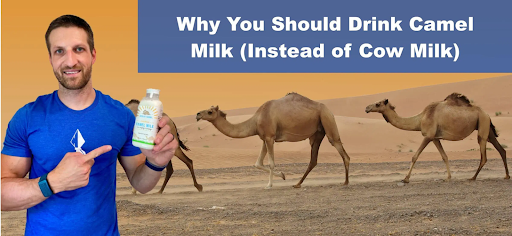Camel Milk vs Cow Milk | Which One Should You Prefer
For most of the global population, cow milk has been the preferable choice for ages. On the other hand, there are many regions across the world where people have been relying on camel milk for years. These two types of milk have different properties and may provide different health benefits. Though cow milk is commonly consumed, people are unaware of the perks of camel milk. You may know the suitable choice for you by looking at their major distinctions. Read on to learn more about these two kinds of milk.
Major differences between camel milk and cow milk
| Characteristics | Camel Milk | Cow Milk |
| Nutrition value | A2 proteins, which are found in camel milk, aid in regulating blood pressure. You might even possibly lower your cholesterol levels because of the availability of A2 proteins, which would allow you to get rid of that extra fat! | Cow milk may contribute to a number of health issues, including gastrointestinal discomfort, heart disease, and inflammation because it includes A1 proteins. |
| Treating Autism | One well-known therapy for autistic people is camel milk. According to a 2005 study, those with autism symptoms who drank camel milk had significant improvement. Camel milk benefits them to appear more relaxed and less restless. They got better-grasping power and their speaking got better. | It is said that cow milk can worsen autistic people’s sensitivities and inflammation. Since autistic people’s guts are so delicate, drinking cow milk could make things worse for them. |
| Diabetes treatment | Camel milk has a larger protein concentration that resembles insulin.
Numerous studies on camel milk’s therapeutic benefits on treating diabetes have been undertaken. It has been found that it aids in about 30% reduction in the amount of insulin needed for type 1 diabetics. It even aids diabetic people in maintaining healthy blood sugar levels. |
However, cow milk because it has a far greater sugar content and much lower levels of insulin than camel milk. |
| Lactose Intolerance | Beta-lactoglobulin, a common source of allergy in those who ingest cow milk, is not present in camel milk.
Additionally, it is more palatable for those who are lactose intolerant because it has less lactose as compared to cow milk. |
The same is not true for cow milk. It was concluded that patients who drank pasteurized camel milk didn’t experience any side effects, but those who drank even small volumes of cow milk experienced noticeable clinical symptoms. |
| Immunity Booster | Numerous substances included in camel milk aid in the fight against pathogenic organisms. Lactoferrin and immunoglobulins are important elements offering the body a powerful immune system and are the two main components of camel milk. | Cow milk contains a lower concentration of minerals and proteins than cow milk. Although magnesium, zinc, and other nutrients are available in cow milk, the concentration is fewer than in camel milk. |
| Availability | Camel milk may not be commonly available in every store within your locality like cow milk. However, if you cannot find a nearby store, you can buy camel milk at one of the online stores. There are plenty of stores you can easily find on the web. | Cow milk is extensively available in the market. As it is one of the most common milk consumed by the masses, you can easily buy it from a wide range of online as well as offline stores. |
Conclusion
Despite cow milk being used widely throughout the world, camel milk has far more health benefits to offer. Various ailments can be treated, and allergies can be reduced with the consumption of camel milk. Anyone having problems such as diabetes and lactose intolerance can begin having camel milk to avoid worsening the condition.
Share this content:














Post Comment